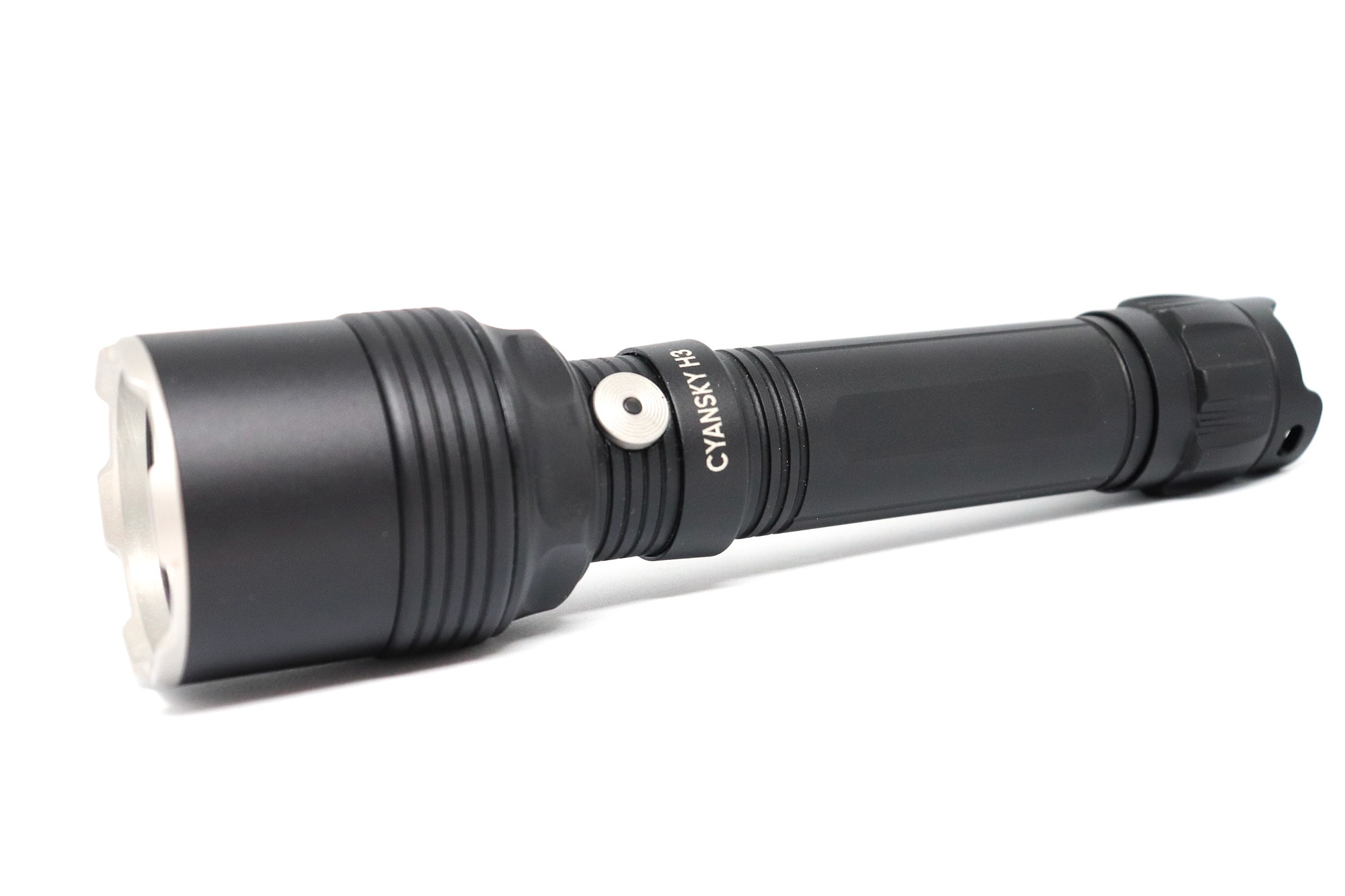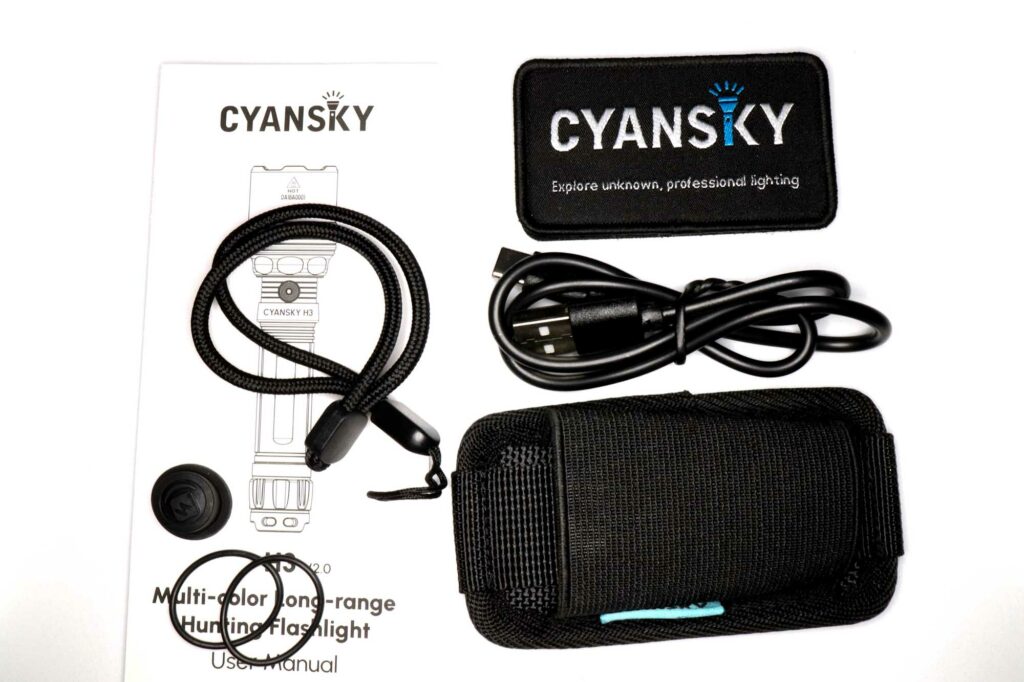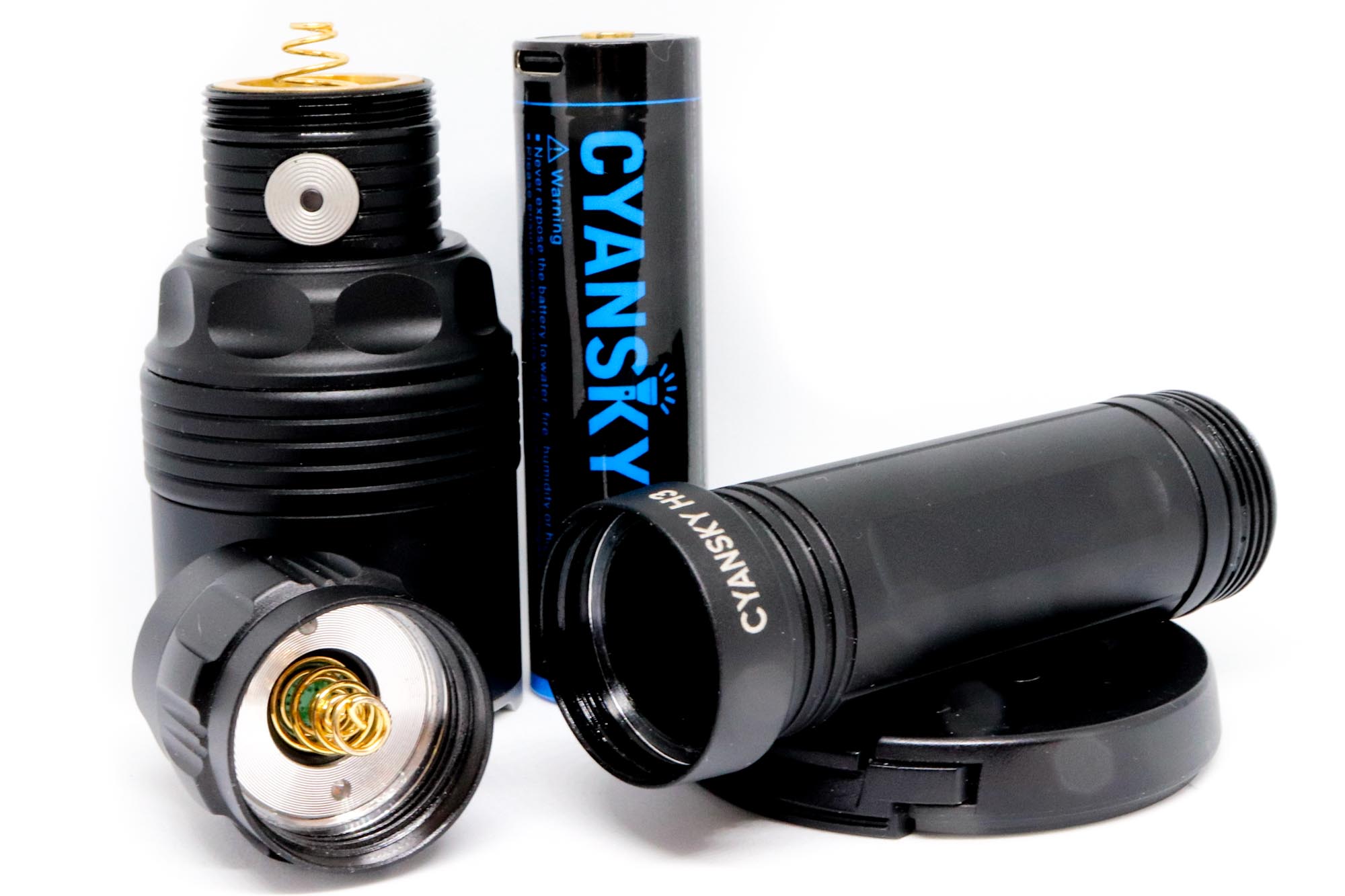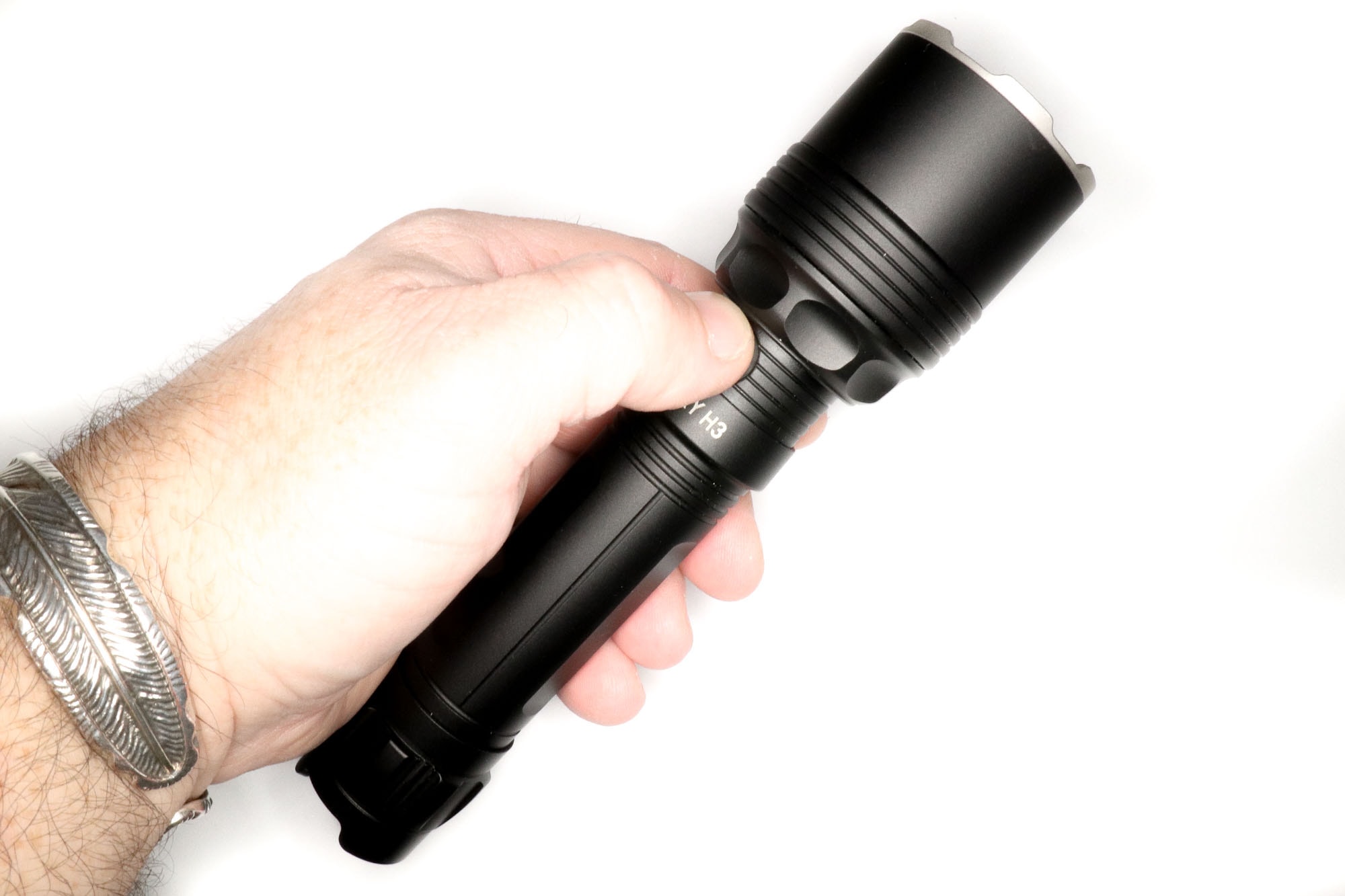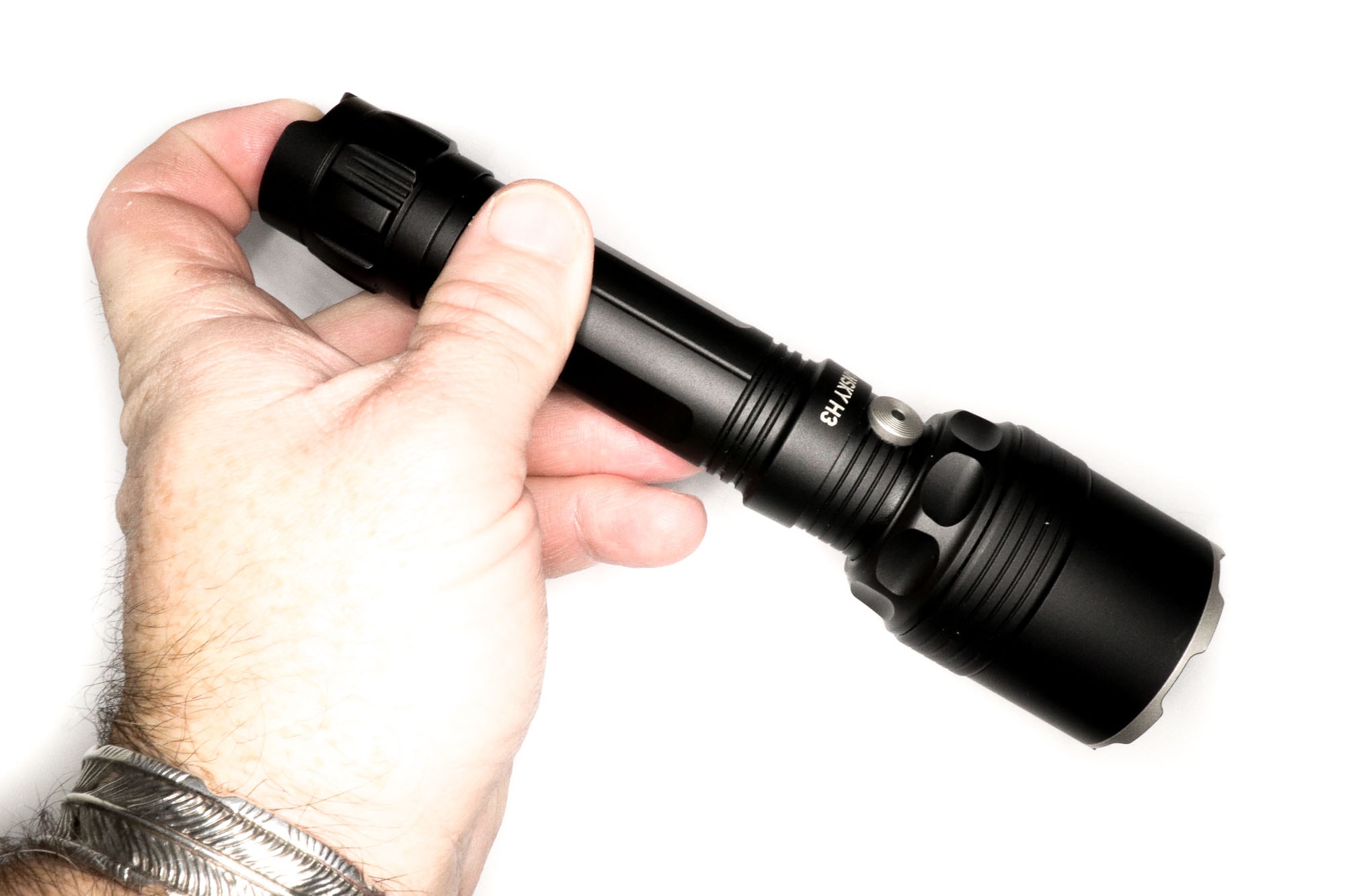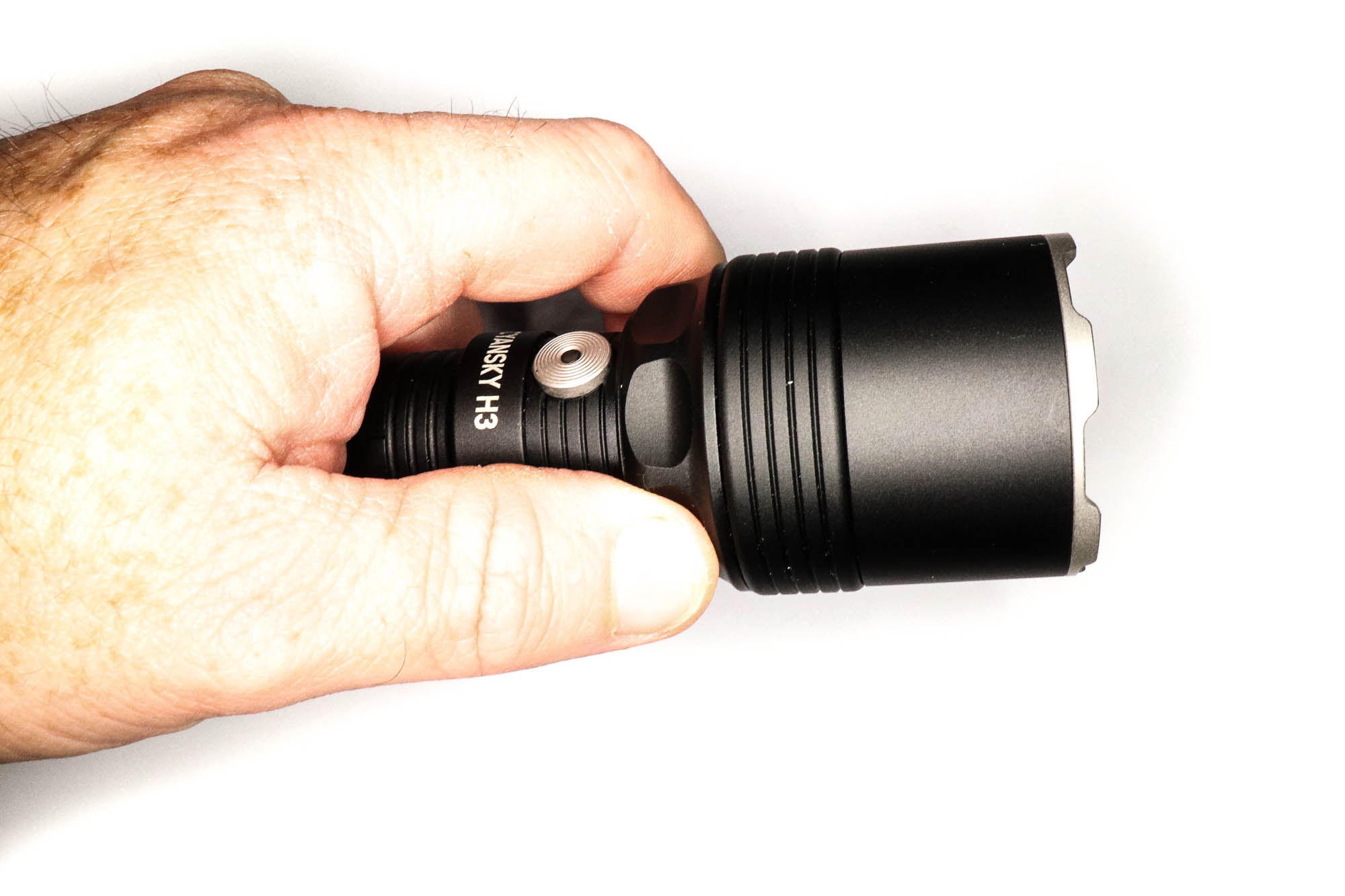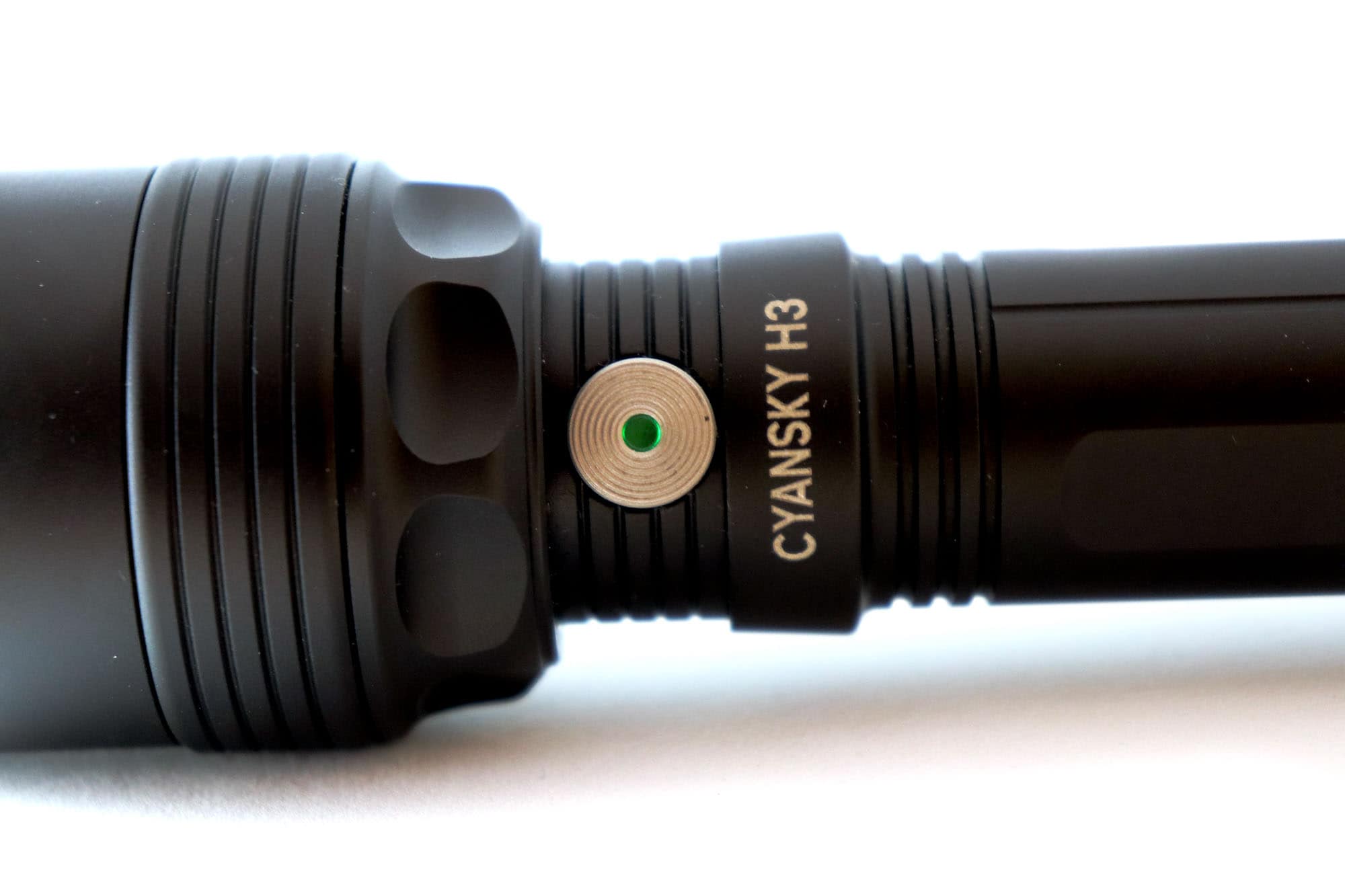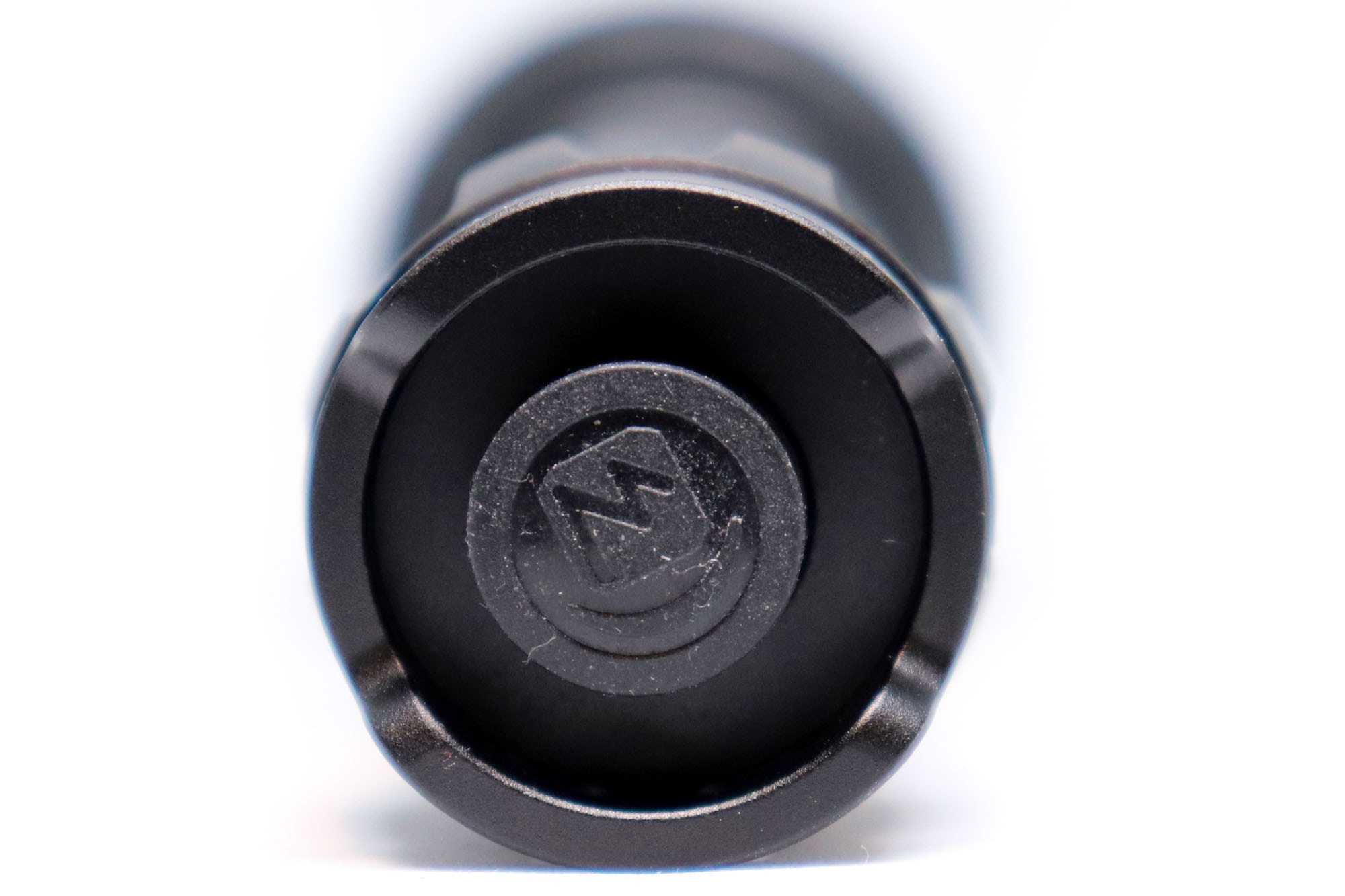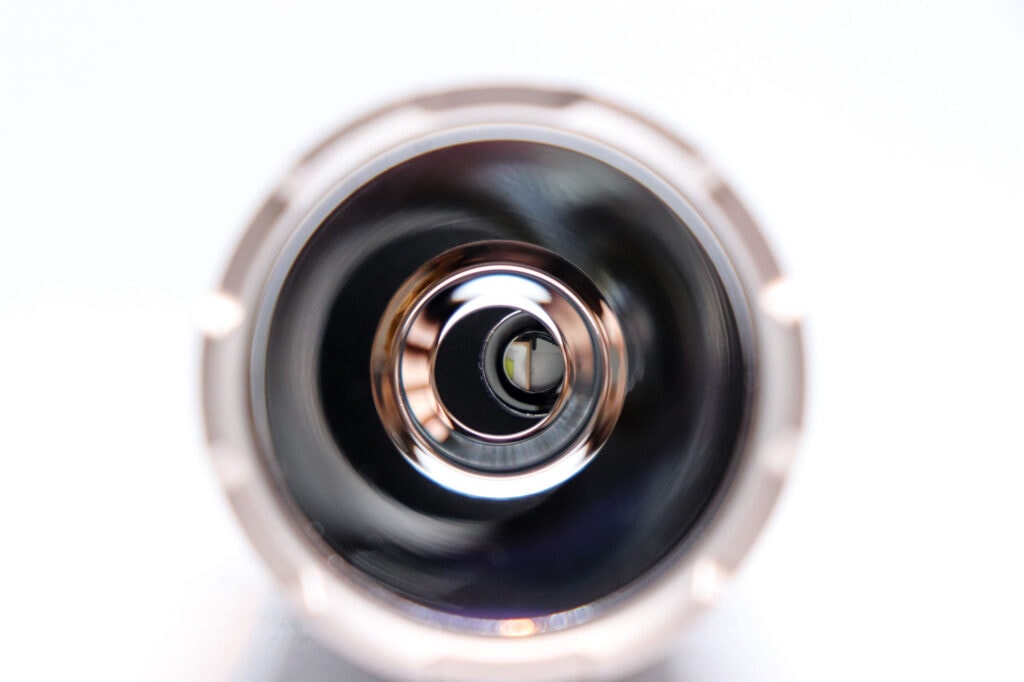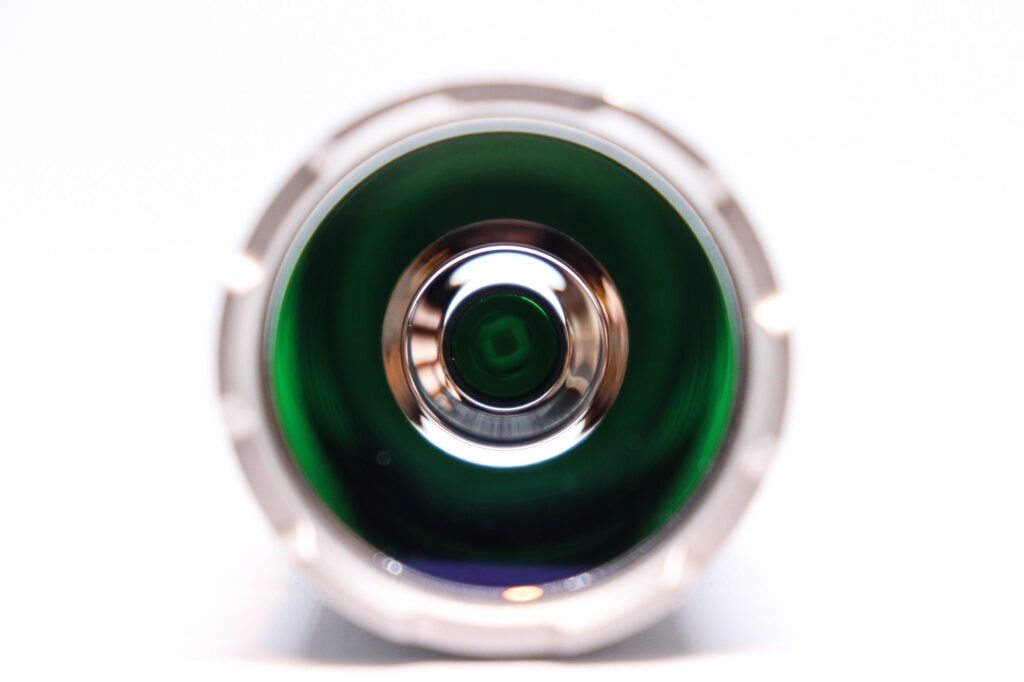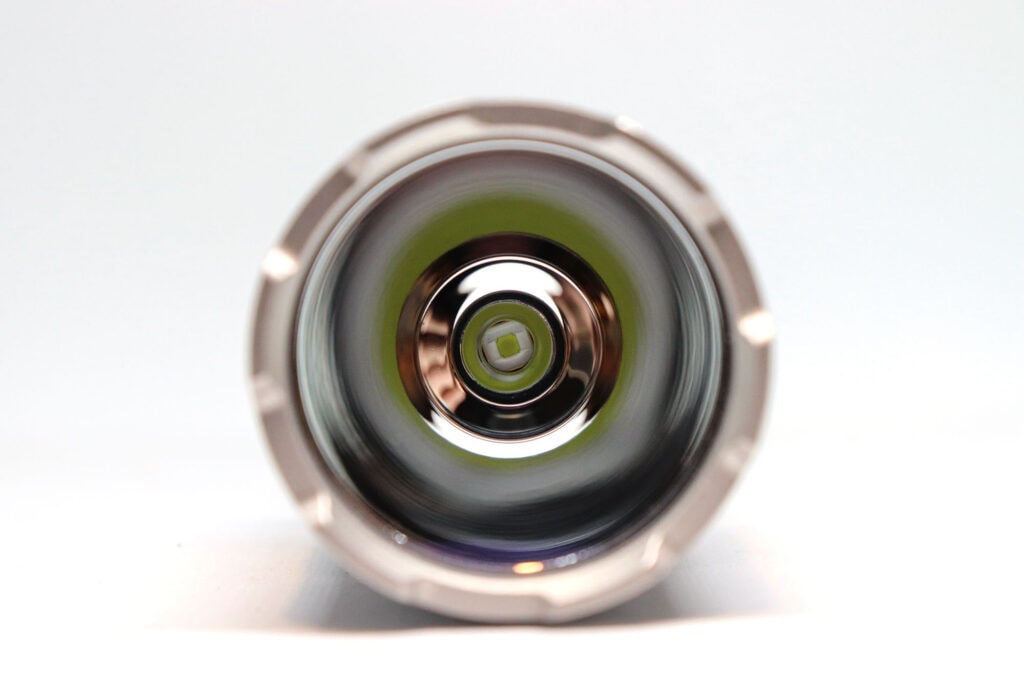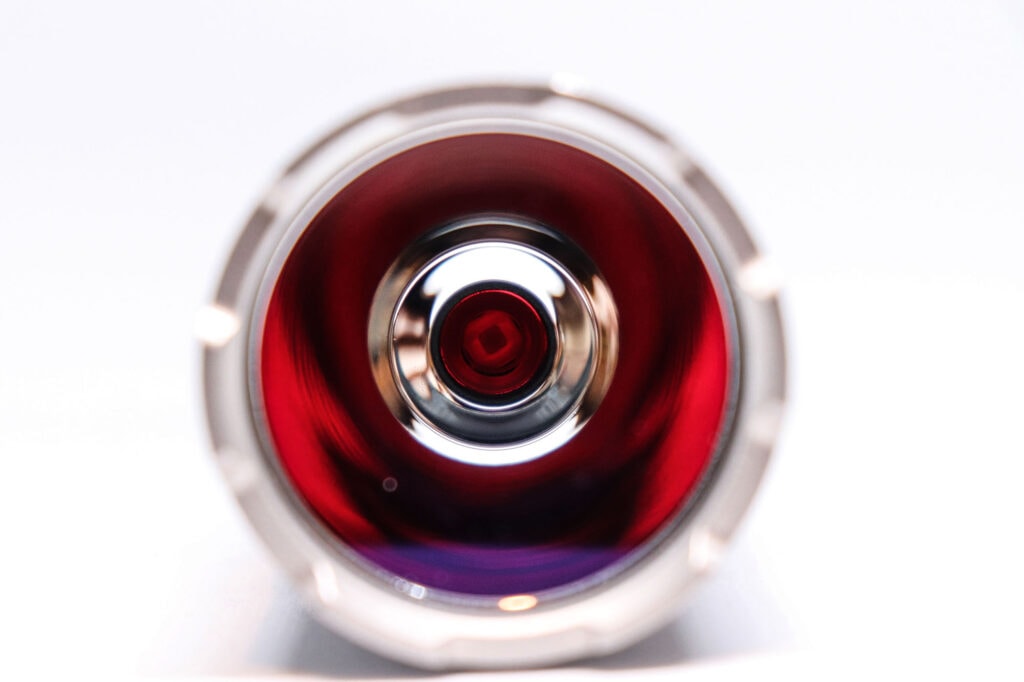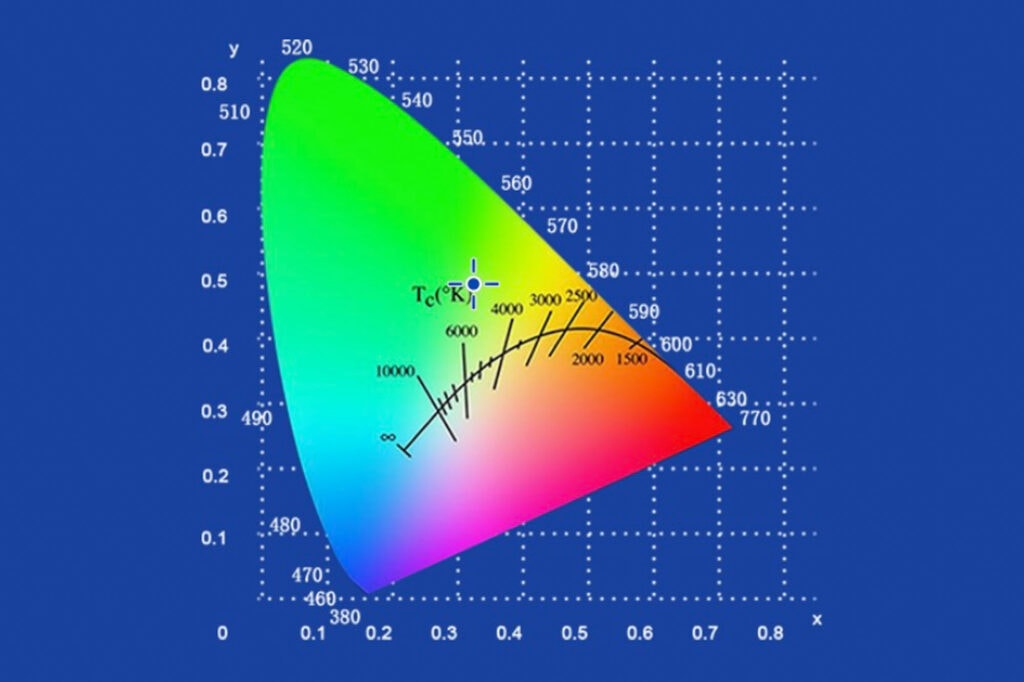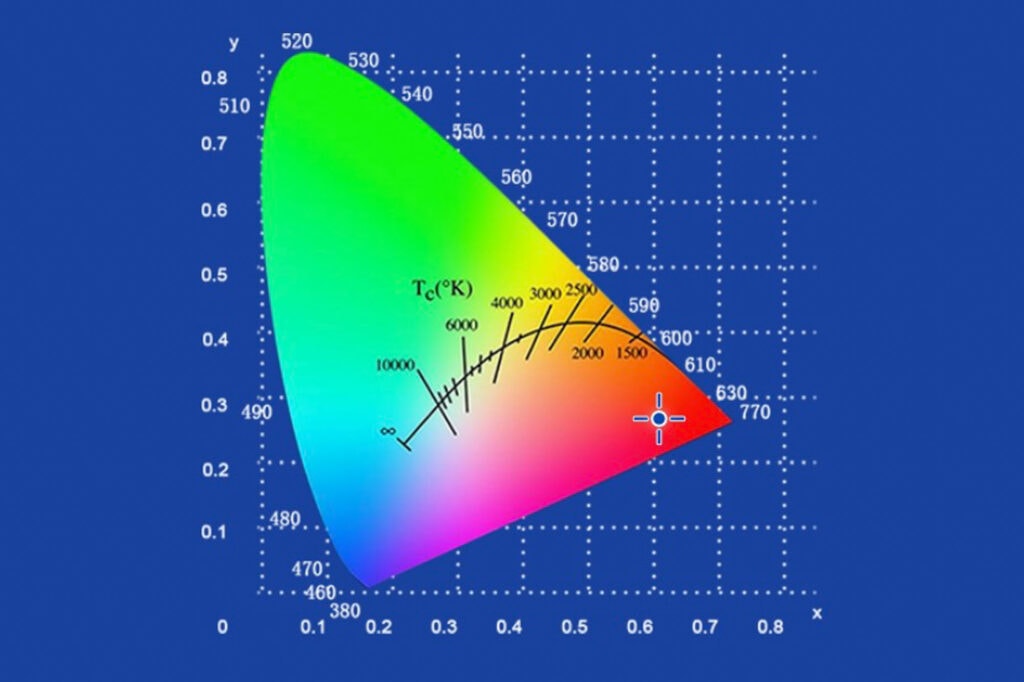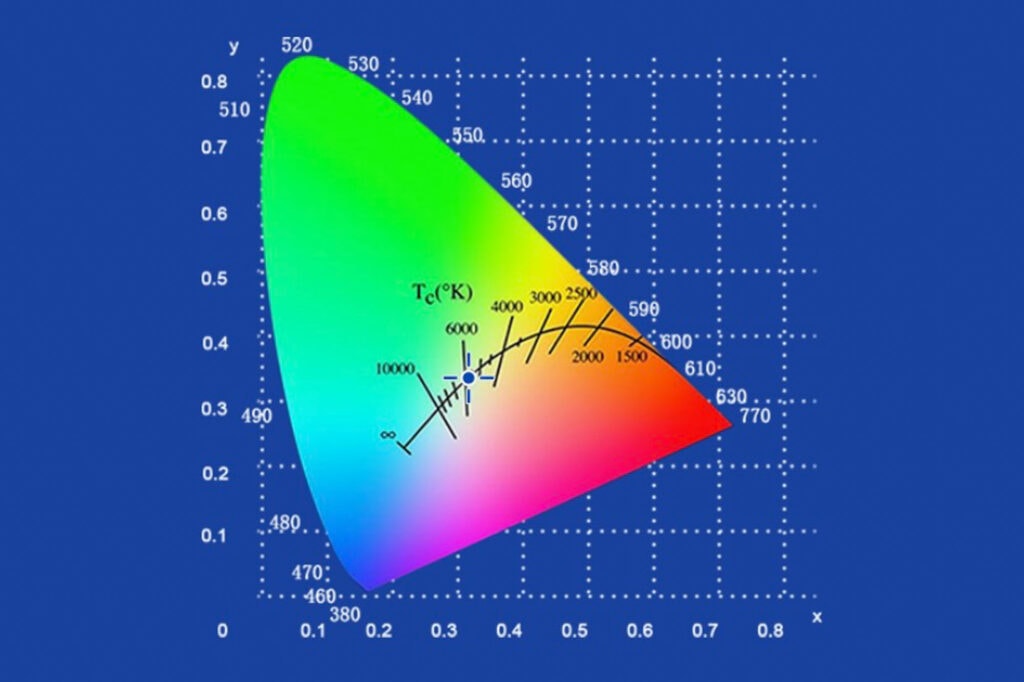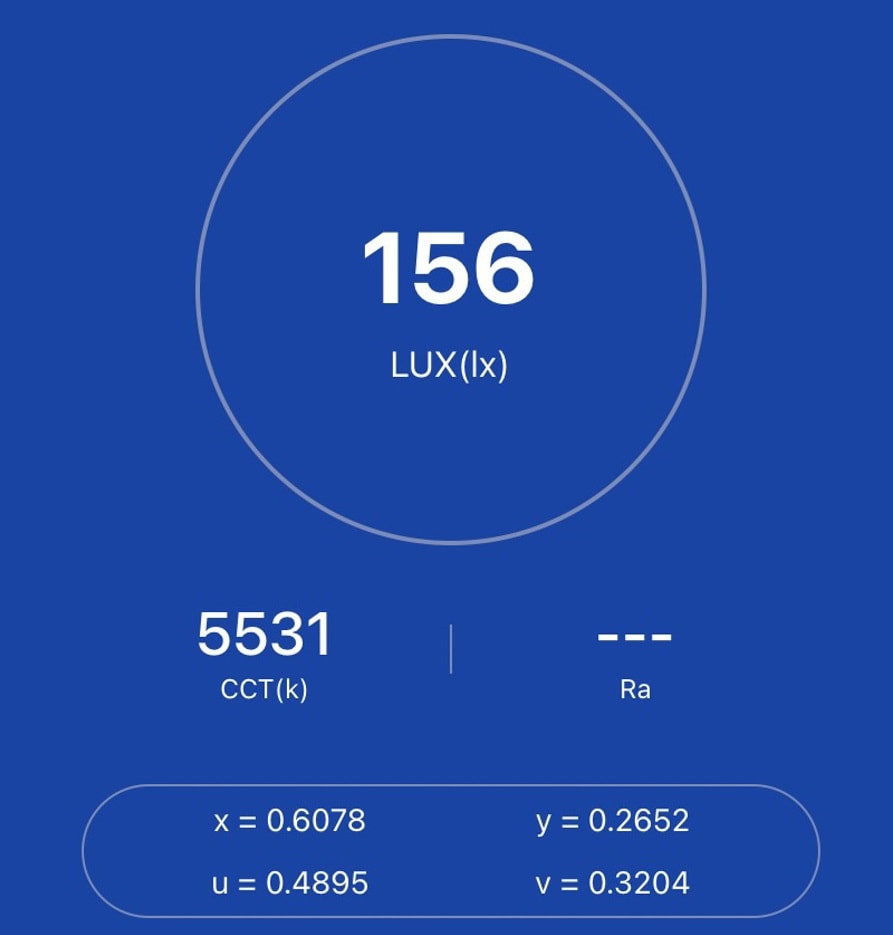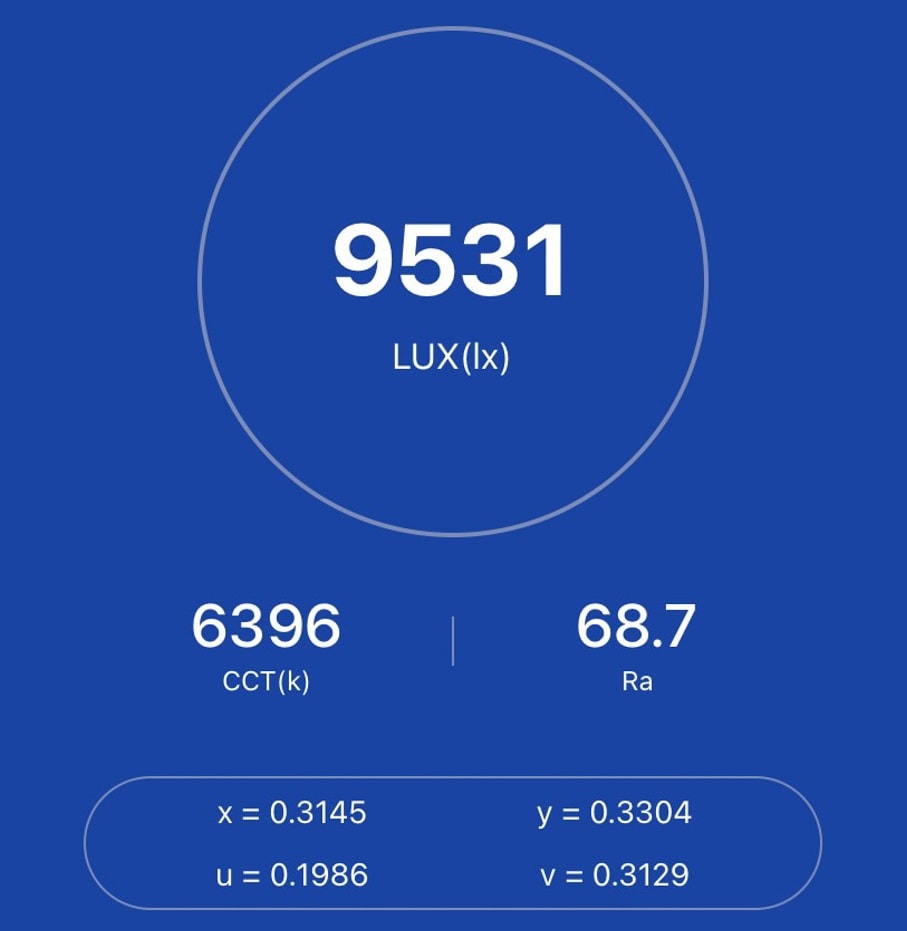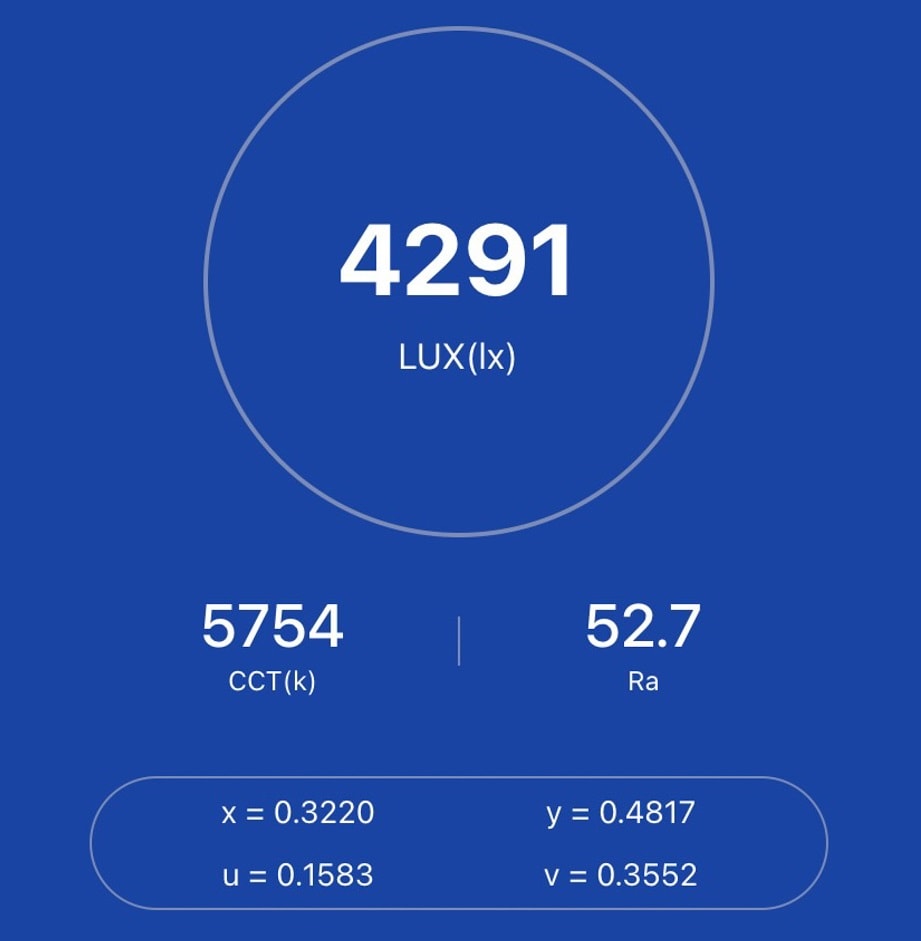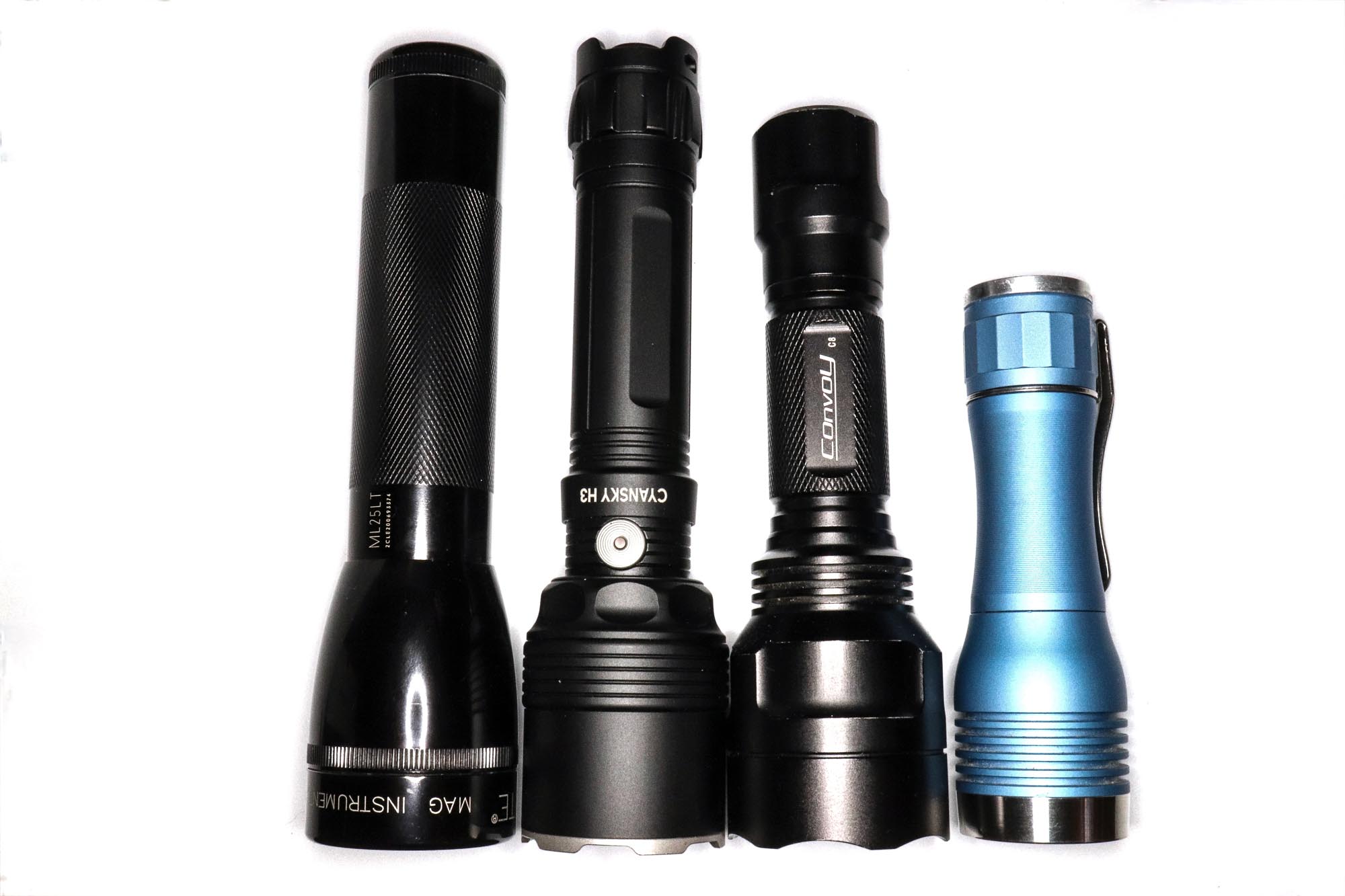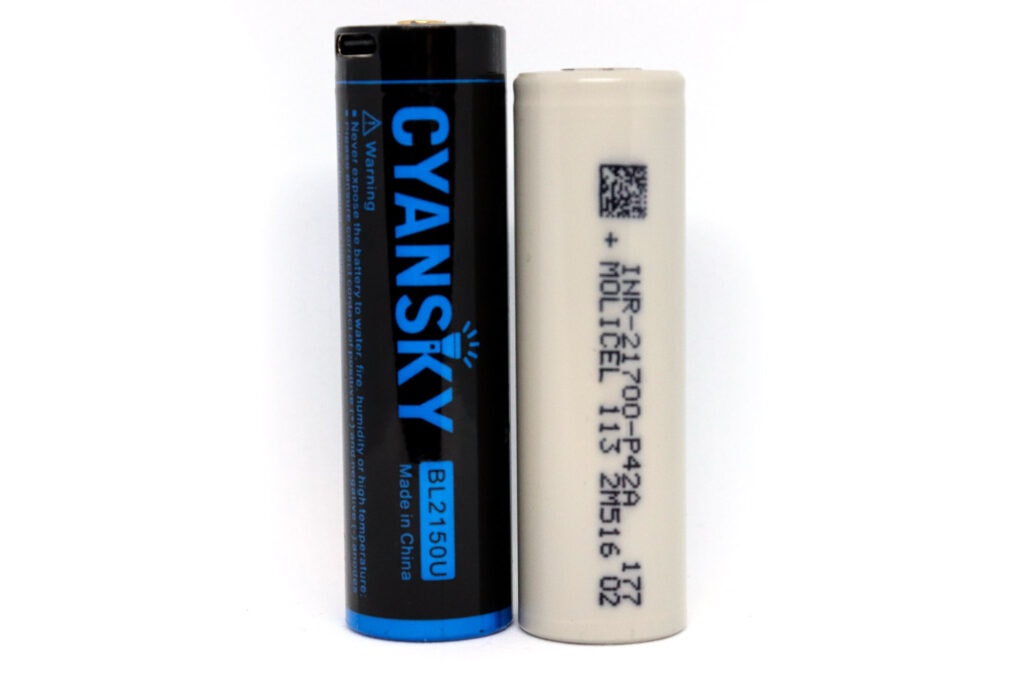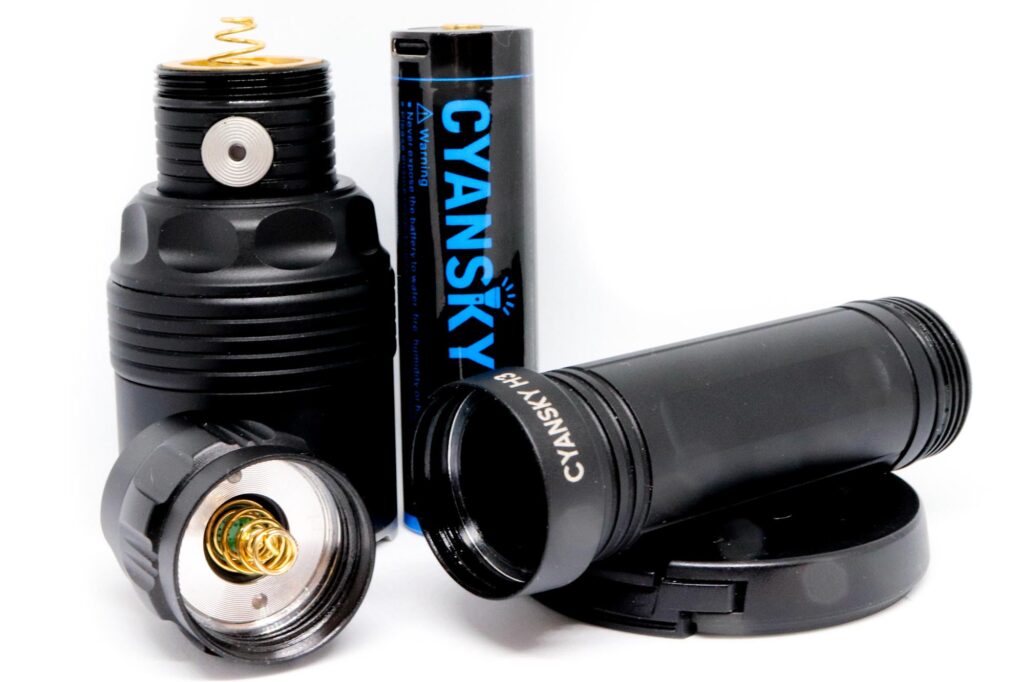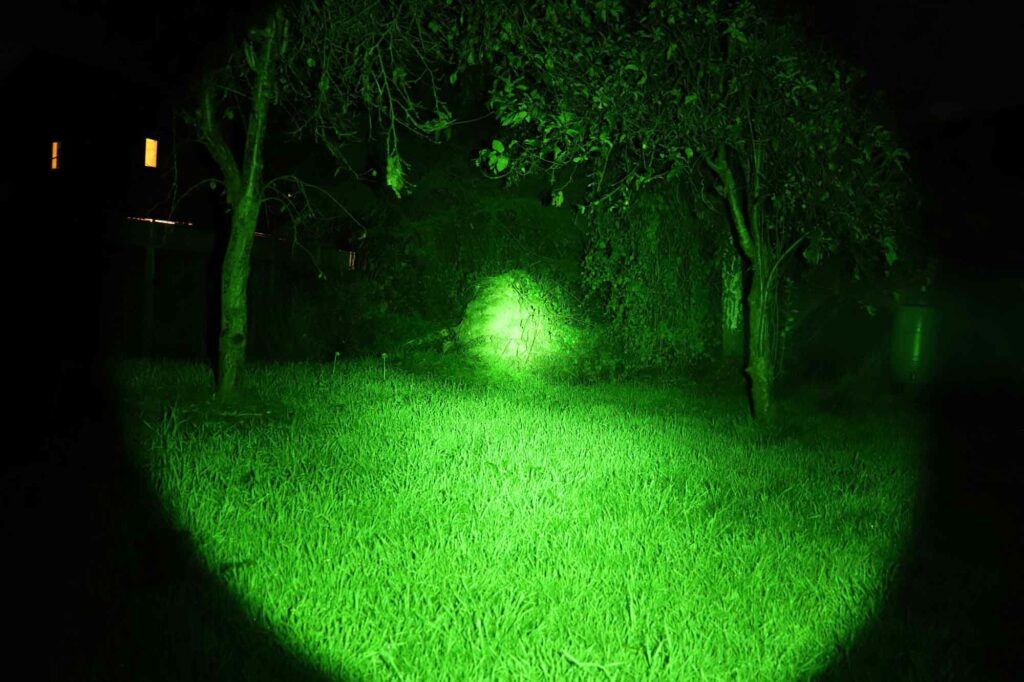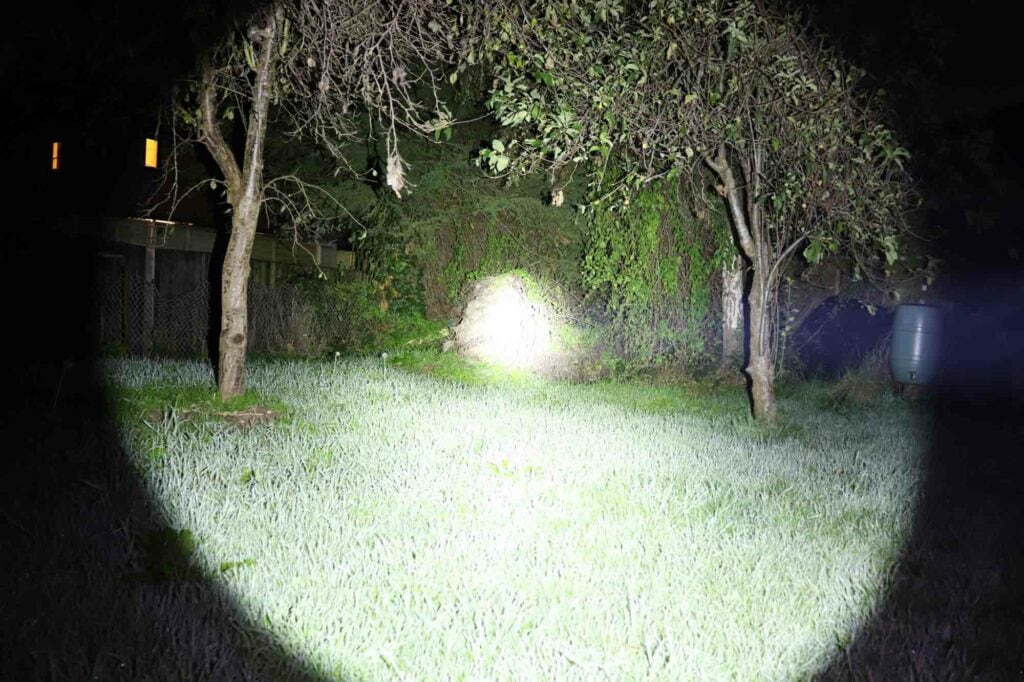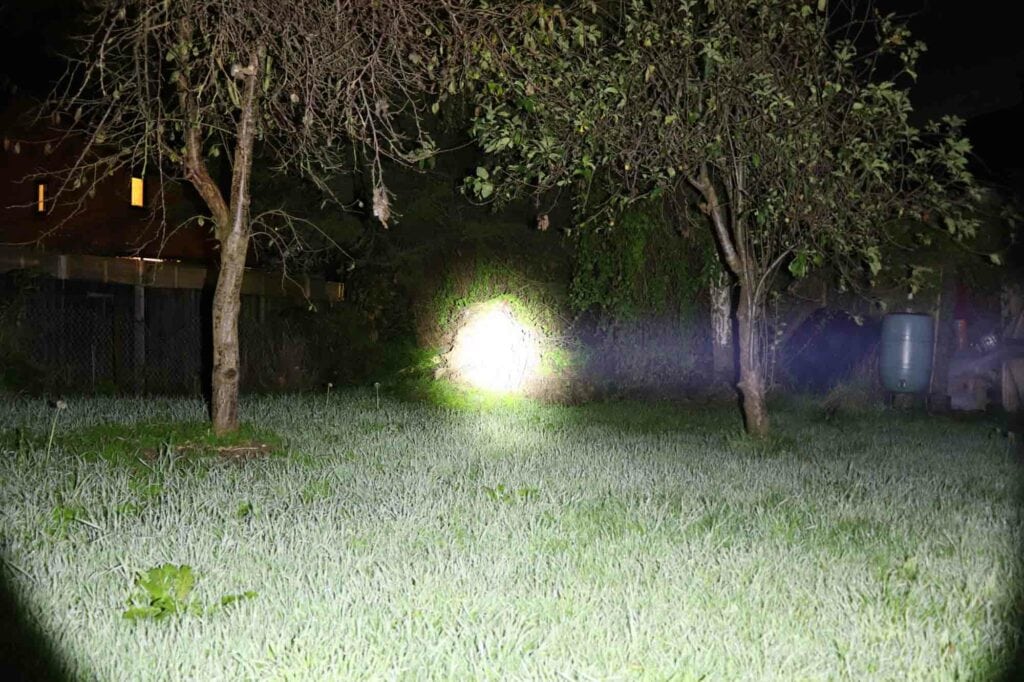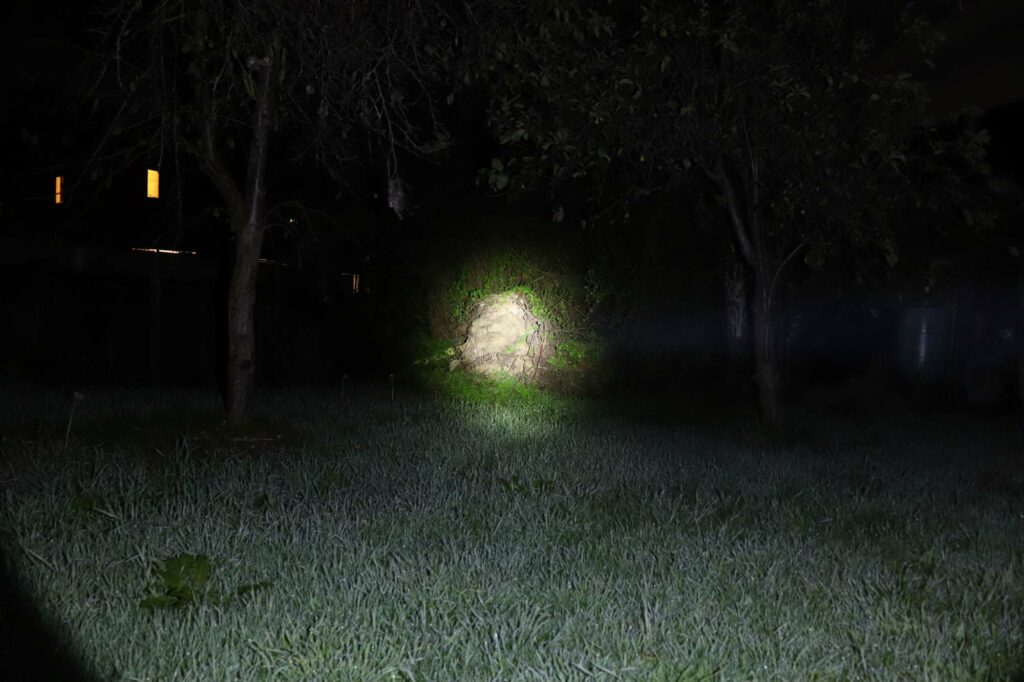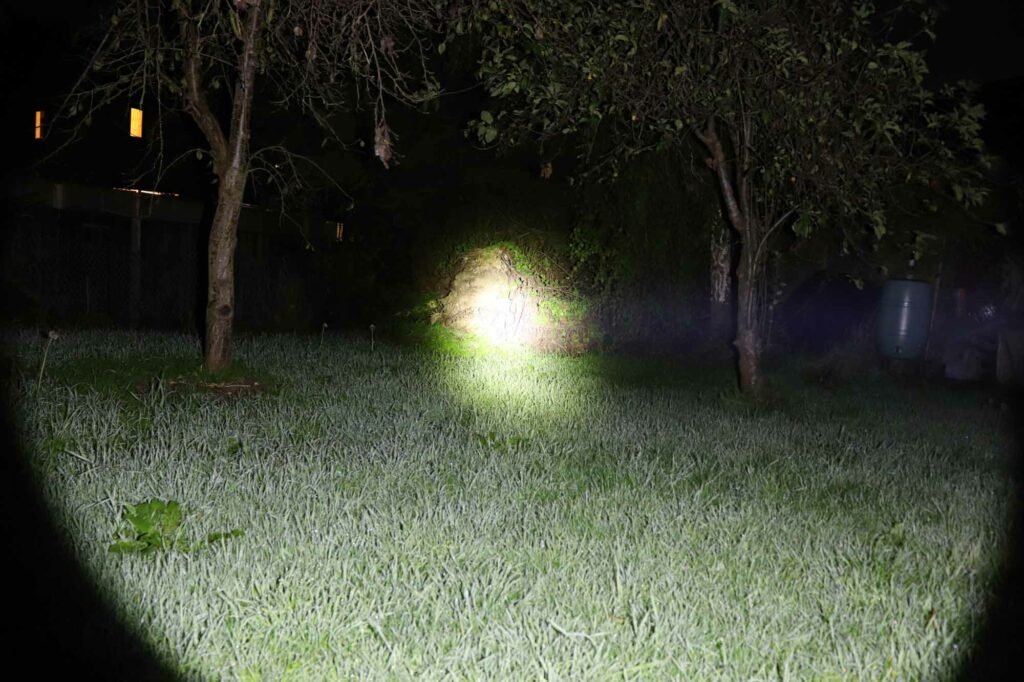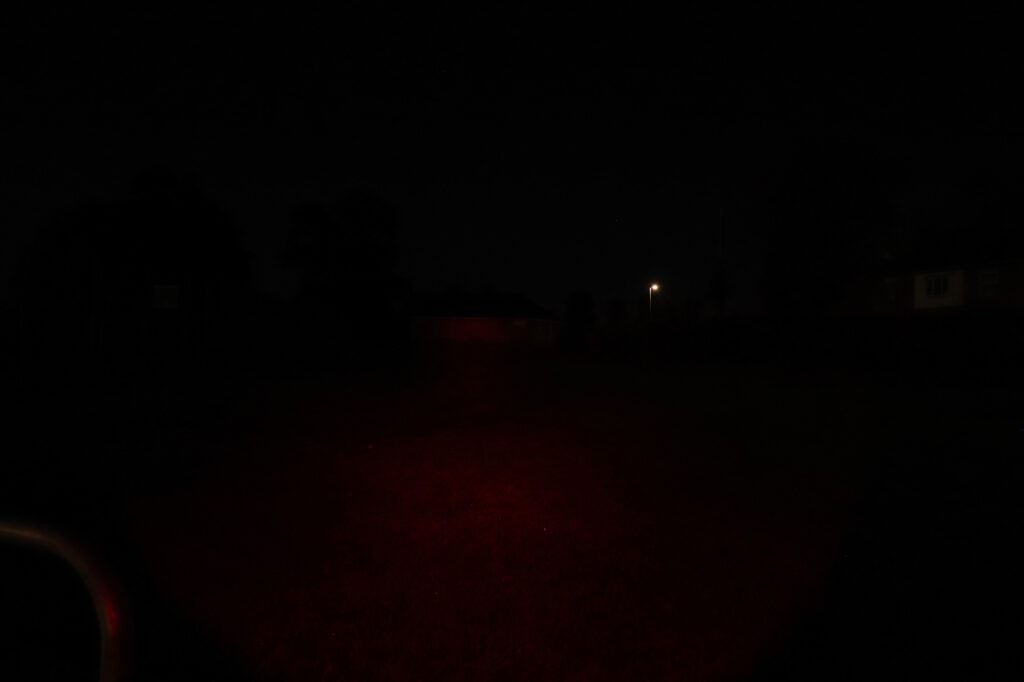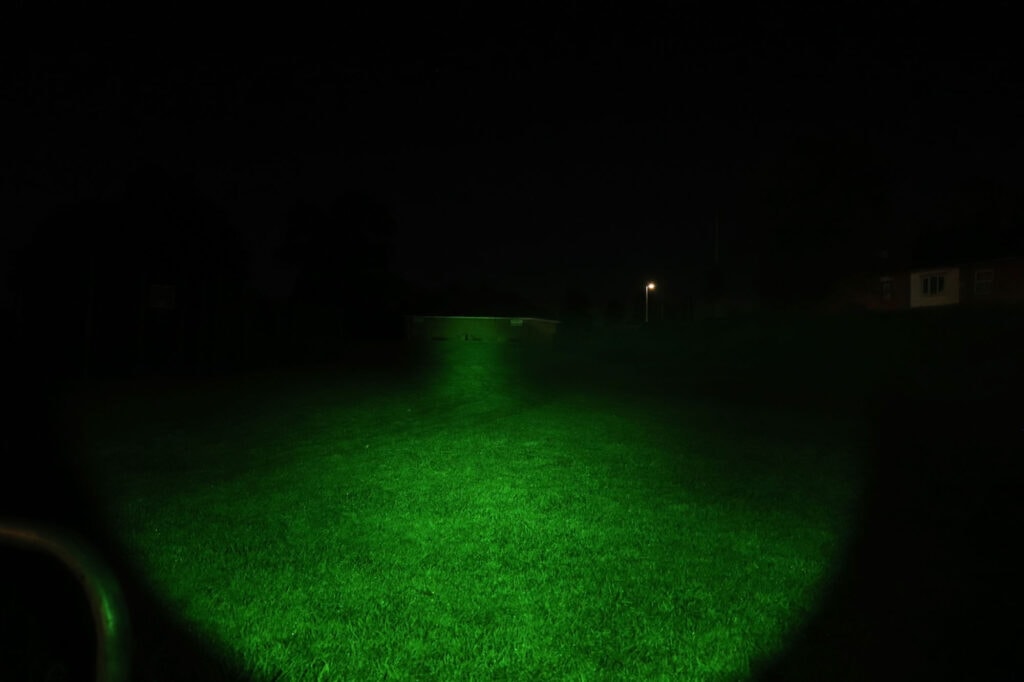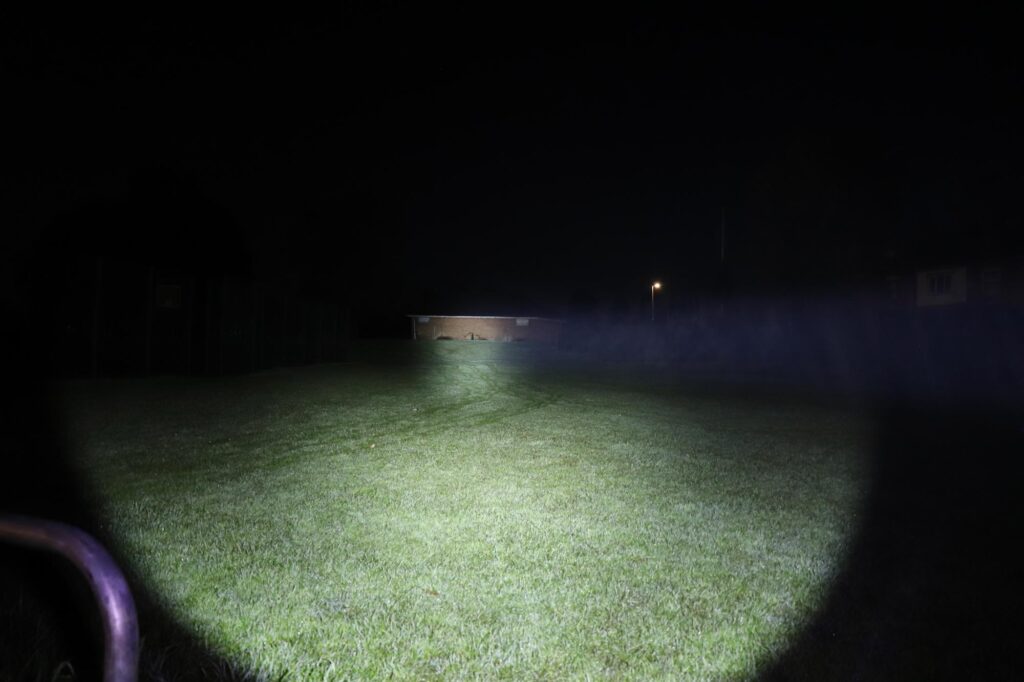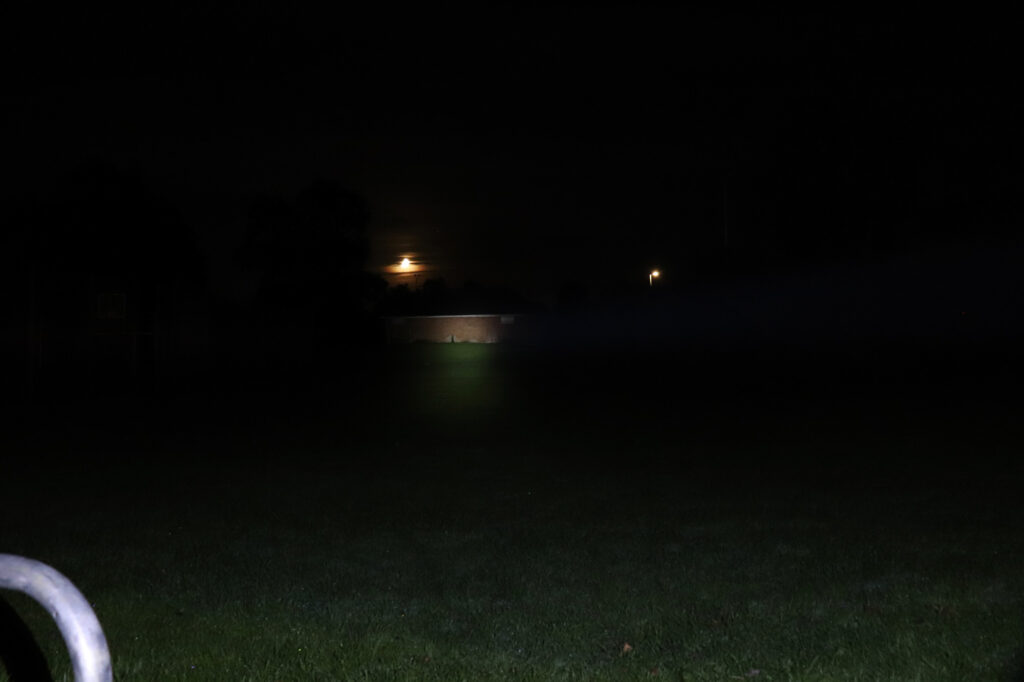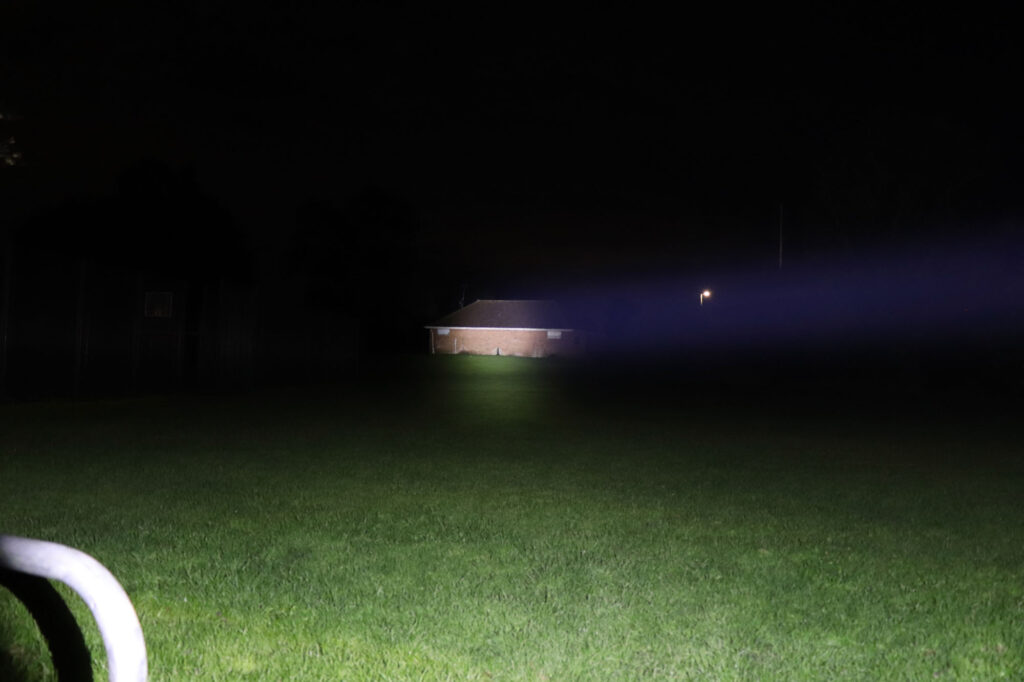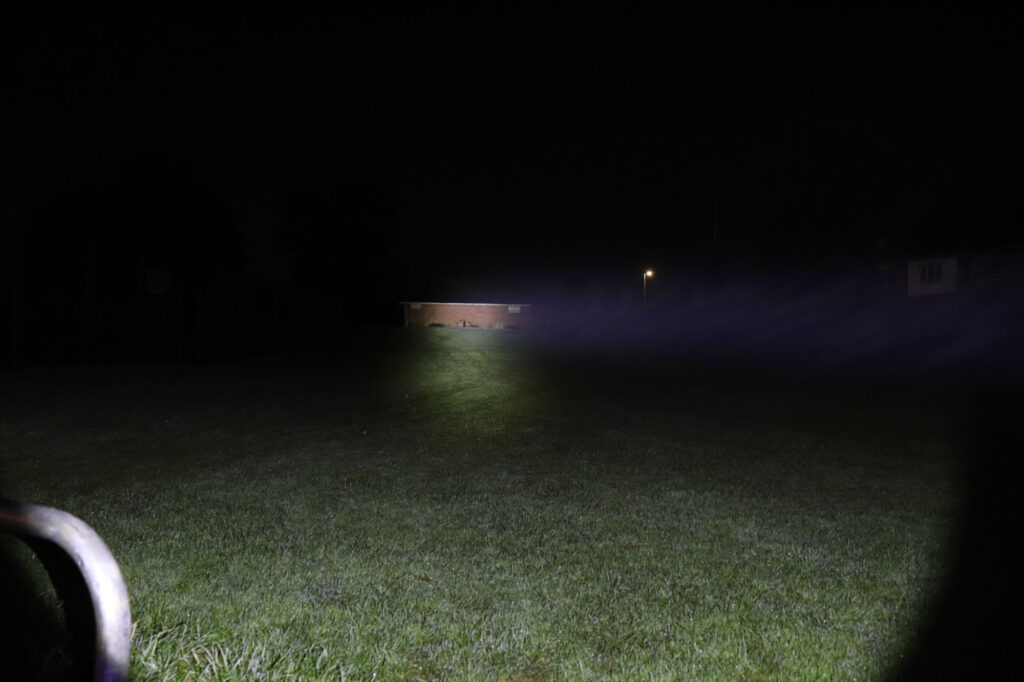1lumen selects and reviews products personally. We may earn affiliate commissions through our links, which help support our testing.
Cyansky H3 V2.0
Cyansky H3 V2.0 specs
| Brand & Model | Cyansky H3 V2.0 |
|---|---|
| Flashlight category | hunter, searchlight, tactical |
| LED | SFT-40-W |
| Max. output | 1600 lumens |
| Max. beam distance | 575 metres |
| Max. beam intensity | 82,656 cd |
| Battery config. | 21700 |
| Onboard charging | No |
| Main modes | 4 outputs white, red or green |
| Blinkies | N/A |
| Waterproof | IP68 |
| Review publication date | November 2023 |
Review intro:
The Cyansky H3 is an exciting tri colour output hunting light. Offering not only white light, but also red and green via an internal filter system, while using only a single LED.
Different light colours have different benefits. Green light typically causes less eye strain and animals and wildlife tend to react less to it. Red is also a traditional lamp colour for hunting, again due to many animals not reacting to it as they would a white light.
This is V2.0 of the H3 light, although I personally never used the original, so I will be reviewing this light on its own merits, strengths and weaknesses. Cyansky also offer a couple of gun mounts and a remote switch for the H3, but these were not included for review. So I won’t be mounting this on a gun for testing and will stick with handheld use.
Package quality.
The H3 comes in a very nice retail box with a full colour photo of the light on the front. No technical specs are displayed on the box. Inside the box the H3 is very well packed and secure.
Cyansky include a number of items with the H3:
- Cyanksy 5000mAh 21700 battery with USB charging port
- USB-C cable
- 2 x spare o-rings
- wrist strap
- Spare clicky switch rubber boot
- holster
- and a weird velcro backed fabric sticker
Flashlight in use, Build Quality, and Warranty
The H3 has a nice smooth satin anodized finish in black. The light feels well put together and high quality.
One thing I like about the H3 is the dual switch setup. You have a forward clicky tail switch for light activation, which also gives you a momentary function. The switch feels ok to good, a bit of mush and a positive click. However, it does seem to have some delay if you wanted to use it for Morse code or signaling. I’m not sure if this is an electronic delay or just in the mechanics of the switch. Ultimately I found I couldn’t easily click a pattern without either not getting it to light up or sometimes clicking it fully on by mistake.
The rubber book also slightly protrudes from the extended edges of the tailcap. This just seems like a sloppy design, as they have gone to the effort to make a tailcap that should tail stand and then fit a switch which is a millimeter or so too long. With the light off it will not tail-stand, with the light on you can just about tail-stand it, but it wobbles a lot.
The secondary switch is an electronic side switch, which feels solid to use and I have no issues with.
The H3 does not come with any sort of anti-roll device and there is no provision to fit a pocket clip. The included holster is a nice idea, which is also small and lightweight, although it may require two hands to use as you have to stretch the holster open to insert the light into it.
The rotary colour selector dial is easy to use and feels well-engineered. More on the colour modes in the LED section shortly.
Cyanksy does offer a couple of gun mounts and a remote switch, I did not have these items on test. The H3 uses springs at both the driver and tailcap, so I hope it is up to the task of dealing with recoil.
In terms of places to use the H3, it really comes down to the UI in many ways. The momentary switch means it could have tactical uses, but it also has mode memory, so unless you have gone to the effort and pre-set the output mode you want to use, you run the risk of it turning on to a low setting just at the moment you really want high. In a tactical situation turning the light on and changing grips or using your other hand to then change modes is not likely a good solution for most.
As a hunting unit, it does what it says on the tin. Although the colour modes really knock the range and output down a lot and again the UI may trip you up in terms of output regulation. More on this in the Performance testing section.
LED, Lens, Bezel, Beam, and Reflector
At the business end of the H3, we have what looks like a silver anodized crenulated bezel. With an AR-coated glass lens and a large smooth reflector. The LED is the SFT-40, which is a domeless LED with a relatively large dye area for a thrower. My experience with this LED is mixed, the throw and output are normally a nice balance and both are quite high. But the tint has usually been a real letdown. The H3 doesn’t disappoint here, while there is nothing truly horrific about the beam, it does have a bluish tint to it. In my opinion, I much prefer the Osram W2 LED for this kind of performance and throw.
That said, the beam is quite a useful beam with a large enough hot spot not to be a pencil beam. Good spill and only a few rings in the beam if you are white wall hunting. I think these come from the odd flat shelf part of the reflector, as they are around the corona part of the beam.
Of course, the biggest party trick of the H3 is its colour-changing ability. A quick rotation of the lower part of the head and you can switch to green or red. This works really well and has a nice positive action and detent feel when you select a filter. You do need to remember the order as there are no markings on the light to tell you what would be the next colour. You can rotate the dial in either direction.
The filters do impact the performance of the light quite a lot. The green still seems very usable, although at a reduced distance. The red filter however knocks the performance back by a massive extent. Meaning you would probably need to use High or Turbo outputs exclusively, which then highlights the regulation pattern issues and the included battery. More on this shortly.
Spectral measurements:
I used an Opple Light Master to measure the flashlight at 3 meters distance.
| Mode: | CCT: | CRI Ra: | duv |
|---|---|---|---|
| High (White) | 6396K | 68.7 | 0.0030 |
| High (Green) | 5754K | 52.7 | 0.0609 |
| High (Red) | 5531K | N/A | 0.2245 |
Dimensions and its competition
Dimensions:
| Cyansky H3 V2 | Millimeters | Inches |
|---|---|---|
| Length | 171mm | 6.76in |
| Head diameter | 41.4mm | 1.63in |
| Body diameter | 25.4mm | 1.00in |
Dimensions are rounded to the nearest millimeter, and to the nearest tenth of an Inch.
Weight:
| Cyansky H3 V2 | Weight in grams | Weight in oz |
|---|---|---|
| Without battery: | 160g | 5.64oz |
| With battery | 235g | 8.29oz |
Weight is rounded to the nearest gram, and to the nearest tenth of an Oz.
Flashlight size comparison with its competition:
Group 1: Maglite ML25LT, Cyansky H3 V2.0, Convoy C8, Noctigon KR1
Cyansky H3 V2.0 UI: User Interface and Driver
Available modes:
- 5 output x 3 light colours + stobe
Available blinky modes:
- Strobe
Rear switch From OFF:
- Momentary press: On (last mode memory)
- Single click: On (last mode memory)
Rear switch From ON:
- 1 click: Off
Side switch From OFF:
- Hold & click rear switch: Eco
- Single click: On (last mode memory)
Rear switch From ON:
- 1 click: Advance mode
- click & hold: strobe
Mode memory:
- Yes
Shortcuts:
- To Low: No
- To Turbo: No
- To Strobe: No
Low voltage warning/protection:
- Yes.
Strobe/blinkies
- Stobe
Lock-out mode:
- Clicky rear switch you can also ¼ turn undo the tail cap.
PWM
- None that I can detect.
Additional/summary info on the UI:
- Overall I like how the UI operates bar complaints about lack of tail standing and a slightly mushy clicky switch. I am not keen on mode memory and there are no shortcuts to any output mode. For hunting this might be fine as you may just pre-set and output and keep turning on and off. But for any other use it isn’t the most ideal, but it is workable.
- Really the biggest UI issue is how the regulation pattern is programmed and the step down performance. More details in the Performance section.
Cyansky H3 V2.0 Charging and batteries
The H3 comes supplied with a Cyansky branded button top 5000mAh 21700 battery, complete with a USB-C charging port and cable. This has to be one of the longest 21700’s I have ever seen, being about 76mm long. It is so long that it doesn’t physically fit in the charge bay of any of my chargers.
It does fit in the H3 however, which has springs at both the driver and tailcap end. This fortunately allows regular flat top 21700s to also be used. The Cyansky battery is likely too long to work in many other 21700 lights or accessories.
The onboard USB charging port of the battery makes it easy and convenient to charge. With a green light indicating fully charged and a red one for charging.
However…. I have had lots of issues with the supplied battery not being able to power the H3 in Turbo mode correctly. Even when fully charged there seems to be only a minor step up in performance, maybe for a fleeting second, it will be considerably higher. The lumen outputs confirm that the supplied battery just doesn’t seem to be up to the task. It seems to charge fine and hold at approx 4.14v fully charged. On the flip side, batteries are cheap and easy to buy. So my advice would be to use a high-performance INR 21700 instead.
As you can see in the Performance section, the Cyansky battery was not able to deliver the full quota of lumens in Turbo mode.
Performance test
Lumen measurements
How Lumens are Measured: Understanding ANSI FL1 Standards How Lumens are Measured: Understanding ANSI FL1 Standards: The ANSI FL1 standards specify that output in lumens should be measured 30 seconds after turning on, as this is the standardized time for measuring brightness according to the industry standard. This is why we focus on this part in our measurements. The ANSI FL1 standards require an ambient temperature of 22 ± 3°C. We record the ambient the ambient temperature to identify potential reasons for any observed discrepancies.To test the performance I use a homemade integrated sphere for lumen testing using a dedicated light metre. I also use the CeillingBounce Android app for measuring throw and runtimes. Both are calibrated using a 1Lumen supplied calibration light.
It is during the performance testing that showed some major issues with the Cyansky H3. The first is an easy one to solve, but still a disappointment. The supplied battery does not seem to be up to the task of successfully powering the turbo output mode.
While using the light and performing beamshots and other testing, it became apparent that it struggled to increase output on turbo mode over the high mode. Something that is obvious as you have to scroll through high to get to turbo. Fresh off the charger the battery would give turbo, but after only a few mins use turbo was hardly any brighter. It would also step down from turbo very quickly, sometimes only after a few seconds, despite having only used the light for a few mins in total.
Lumen testing showed the above to be true with Turbo only being marginally brighter than High *840 vs 745 lumens) and about half what the claimed figure should be for Turbo.
To verify this I also tried turbo using a high quality Samsung 40T INR 21700 battery. This battery resulted in a much brighter Turbo output and very close to claimed specs. I do not know if the battery I have from Cyansky is typical of the batteries they supply or if this individual one is under performing. The battery seems fine otherwise, just not able to deliver the amps required for turbo.
As it happens, replacing a battery is cheap and easy. But one would have to question why Cyansky supplies a battery incapable of fully operating the light it is for.
The next issue is rather more serious and at first, I thought it was a result of the battery. But further testing using the Samsung 40T has shown it not to be. The regulation pattern seems to be very odd with early steps downs and a reluctance to maintain output. The included instruction manual shows some nice charts of the stepped flat regulation discharge for all outputs and modes. The reality just doesn’t seem to tally with what Cyansky claims. For Turbo, High & Medium the light seems to want to rather quickly step down to 25-27 lumen output and then stay there for hours. This is hugely disappointing and in contrast to most other lights on the market.
Take Turbo for instance, the manual shows it stepping down after approx 5 mins, then a flat output matching the High rating for 2 hours constant before switching off. What actually happened was 8 and half mins of gradually reducing output where it then stepped down for 4 mins then dropped to below 10% of the initial peak ending the ANSI FL1 standard test at a mere 12 mins duration. From here it then dropped to 25 lumens and stayed on for 16 hours! At which point I ended the test as there was nothing else to learn from this. This same basic behavior appears on all the modes I performed runtime tests against, including Medium. The Samsung 40T seemed to behave the same, so this must be the regulation programming and not the fault of the battery.
White
| Mode | Amps at start | Specified | 0 sec. | 30 sec. | 10 min. |
|---|---|---|---|---|---|
| Eco | Not tested | 2 | 2 | 2 | 2 |
| Low | 00.8 | 30 | 27 | 27 | ? |
| Med | 0.32 | 150 | 139 | 139 | 27 |
| High | 2.46 | 800 | 741 | 745 | 676 |
| Turbo | 2.72 | 1600 | 810 | 841 lm | 128 |
| Turbo (Samsung 40T) | 3.25 | 1600 | 1573 | 1487 lm | Not tested |
Green
| Mode | Amps at start | Specified | 0 sec. | 30 sec. | 10 min. |
|---|---|---|---|---|---|
| Eco | Not tested | 1 | 1 | 1 | Not tested |
| Low | 00.8 | 8 | 7 | 7 | Not tested |
| Med | 0.32 | 40 | 35 | 35 | Not tested |
| High | 2.46 | 200 | 173 | 147 | Not tested |
| Turbo | 2.72 | 400 | 199 | 156 lm | Not tested |
Red
| Mode | Amps at start | Specified | 0 sec. | 30 sec. | 10 min. |
|---|---|---|---|---|---|
| Eco | Not tested | 2 | 0.2 | 0.2 | Not tested |
| Low | 00.8 | 2 | 2 | 2 | Not tested |
| Med | 0.32 | 10 | 10 | 11 | Not tested |
| High | 2.46 | 50 | 50 | 25 | Not tested |
| Turbo | 2.72 | 100 | 52 | 22 lm | Not tested |
Parasitic drain:
- None
Cyansky H3 V2.0 Battery Life: Runtime graphs
How Runtimes are Measured: Understanding ANSI FL1 Standards About ANSI FL1 runtime standards: The runtime is measured until the light drops to 10% of its initial output (30 seconds after turning on). This does not mean that the flashlight is not usable anymore. The last column shows how long the light actually works till it shuts off. If there is a + symbol, it means that the test was stopped at that particular point, but the light was actually still running. This happens on certain occasions, with certain drivers, firmware, or batteries.| Mode | Specified runtime | Measured runtime ANSI | Time till shut off |
|---|---|---|---|
| Eco | 400h | Not tested | Not tested |
| Low | 66h | Not tested | Not tested |
| Med | 16h | 19h+ | Test terminated at 19h |
| High | 4h | 44m | Test terminated at 15h |
| Turbo | 2h | 12m | Test terminated at 18h |
| High (Samsung 40T) | 4h | 54m | Test terminated at 6h |
Peak beam intensity and beam distance measurements
About Peak beam intensity: Understanding ANSI FL1 Standards About peak beam intensity The calculated value of distance in meters at which the flashlight produces a light intensity of 0.25 lux. (0.25 lux is about the brightness of a full moon shining on an object). This means that the intensity has decreased so much, it becomes difficult to see darker objects, or objects that don’t reflect light. The columns ‘Meters’ and ‘Yards’ use rounded numbers.White
| Mode | Specs | Candela measured | Meters | Yards |
|---|---|---|---|---|
| Low | 1482cd | 1727cd | 83m | 91yd |
| Medium | 7225cd | 9253cd | 192m | 210yd |
| High | 37056cd | 47155cd | 434m | 475yd |
| Turbo | 82656cd | 76501cd | 553m | 605yd |
Green
| Mode | Specs | Candela measured | Meters | Yards |
| Low | 441cd | 487cd | 44m | 48yd |
| Medium | 1936cd | 2499cd | 100m | 109yd |
| High | 9801cd | 11631cd | 216m | 236yd |
| Turbo | 20739cd | 15655cd | 250m | 273yd |
Red
| Mode | Specs | Candela measured | Meters | Yards |
| Low | 132cd | 99cd | 20m | 22yd |
| Medium | 420cd | 484cd | 44m | 48yd |
| High | 1806cd | 1384cd | 74m | 81yd |
| Turbo | 3782cd | 1586cd | 80m | 88yd |
Beamshots
Camera settings and distance: Camera: Canon EOS 200D DSLR , 18mm, ¼ sec, F4.5, ISO: 1600, WB: 5200k
To take the photos the camera and torch are both mounted to a tripod using a timer on the shutter. Beam shots are taken at two different distances.
Distance: 100m to the building
Distance: 5m to the tree on the left and 11m to the compost heap
100m Beamshots of the following flashlights compared:
- Manker Striker Mini
- Maglite ML25LT
- Convoy C8 Osam W1 OP reflector
- Noctigon KR1 Osram W2
5-11m Beamshots of the following flashlights compared:
- Manker Striker Mini
- Maglite ML25LT
- Noctigon KR1 Osram W2
Please note that beamshots are mainly intended to showcase the beam pattern and beam quality, rather than overall performance. These images are typically taken directly after activation, and do not fully represent its overall performance. For accurate performance metrics, such as output, beam distance, and runtimes, you need to look at the performance section of this review.
Disclaimer: This flashlight was sent to us for review at no cost by Cyansky. We have not been paid to review, nor have we been holding back on problems or defects.
Final Verdict
Pros
- Easy access Red & Green
- Throw
- UI
- General build & use
Cons
- Poor regulation pattern
- Included battery performance on turbo
- Blueish tint
- Last mode memory
- Leaning Tower of Pisa tail standing
Explanation on star ratings:
1: Avoid: a match would be a better choice – 2: Poor: significant defect or issues; almost unusable – 3: Average: some defects or issues; but still usable 4: Good: recommended (minor issues) – 5: Great: highly recommended
3.5 stars: ★★★⋆
While our star rating provides a reliable indicator, we encourage you to read the full review to make an informed decision based on your own needs and preferences.
The Cyansky H3 V2.0 is very unique in having an integrated tri colour filter built into the light. This means it sits in a rather niche sector of the market. While you can use the light for other activities, its prime use as a hunting light suits its basic design, setup and UI. This means I’m rather torn, I can accept the poor tint of the SFT-40 LED and even the lack of stable tail standing. The poor performance of the included battery, while not ideal, can be overlooked and resolved easily, so isn’t a deal breaker for me.
But, and it is a very major “but”, the regulation and step down performance is much harder to overlook. And means you can only use the light for much shorter periods of time compared to the claimed specs. If you think you can work around this restriction, it is still a good light. But compared to other lights on the market this regulation pattern is rather shockingly poor.
I was all set to give the H3 a high score until I did the runtime testing. And what is worse is it is so far adrift from the claims made by Cyansky on how the light performs that it makes you feel cheated and deceived.
Cyansky heavily markets the regulation and performance on their website and in the instruction manual with plotted graphs showing what to expect. To this end it all leaves a rather bitter taste in one’s mouth. Earning the H3 a 3.5 out of 5 from me.
Buy your Cyansky H3 V2.0 here
1lumen selects and reviews products personally. We may earn affiliate commissions through our links, which help support our testing.
